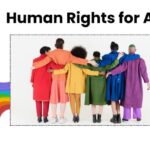Throughout 2025, we’ll be featuring very short stories about United Church history.

Many thanks to Gayle Simonson, a lay member of the United Church at Southminster Steinhauer in Edmonton, an experienced history researcher, and a writer who has written for historical journals and UCC publications. She is a key volunteer in the United Church archives for both Northern Spirit and Chinook Winds.
Gayle’s generosity means that we’ll have frequent reminders of our history with a focus on ordinary people. We’ll run these in the Regional newsletter, and group them here for your own use. Please see the Word files for each set of 8 for you to download and use. Please remember to credit!
Vignettes 1-8.
Vignettes 9-17. (Word format; when you click, the file will save automatically to your Downloads folder.)
Here are the stories, in order. Enjoy!
1. As western Canada was settled, communities sprang up but populations remained sparse. It was difficult to sustain a church congregation, so many churches of different denominations came together to form union churches. As the idea spread, denominations were encouraged to look at amalgamation. By 1925, Methodists, Presbyterians and Congregationalists had agreed and the United Church of Canada was formed by an act of parliament. Not all Presbyterian congregations agreed to join. Over the next year, we hope to present some highlights of our church history. We must not be bound by the past, but we do well to remember our history and to celebrate those who have brought us to this place.
2. The Basis of Union to form the United Church of Canada was signed in 1925. Methodist Louise McKinney, an activist who was the first woman to sit in the Alberta legislature, was one of only four women to sign and the only one from western Canada. Along with Henrietta Muir Edwards, Nellie McClung, Irene Parlby and Emily Murphy, she was one of the “Famous Five” who, in 1929, had women in Canada declared as “Persons.”
3. The first moderator to be elected by the General Council was Rev. George Pidgeon, who had been the last moderator of the Presbyterian Church in Canada and had been a strong supporter of church union. A strong believer in ecumenism, he helped to found both the Canadian Council of Churches (1945) and the World Council of Churches (1946.)
4. Rev. Astor Schrag, at the time of church union, was minister at an independent Union Church in Vegreville. In 1925, he attended both the final meeting of the Congregational Union of Canada and the inaugural General Council of the United Church in Toronto. His commitment to church unity never wavered and at age 95, he was still leading an ecumenical Bible study. He died in 1978 at 102. A window in Banff’s Rundle United Church, dedicated in 1965, commemorates this Congregational leader in the west.
5. True to its roots, the United Church has a liberal (sometimes controversial!) approach to theology and social activism. In London about 1592, two Congregational leaders were hanged for denying the Queen’s “ecclesiastical supremacy.” At union, Methodist Rev. Dr. Samuel Rose wrote, “one is impressed with the significant place of laymen” within the United Church and believed Methodists “led the fighting forces” working for social reform. Presbyterian Dr. John T. McNeill noted, “Our colleges have been nurseries both of religion and learning” with “a knack for conserving the values of the past while moving on in obedience to a new and true vision.” Congregationalist Dr. W.H. Warriner stressed an acceptance of all forms of worship as new revelations continue to expand our faith.
6. Women have always played active, if undervalued roles in church activities. Methodist women were sometimes allowed to preach prior to union but were never ordained. In 1923, Saskatchewan resident Lydia Gruchy graduated with top honours from Saskatoon’s Presbyterian Theological College (now St. Andrew’s). She was initially refused ordination but finally, in 1936, became the first woman in the United Church to be ordained. Acceptance of women in ministry was slow but in the 1980s, my congregation had two women ministers. After attending a different congregation on holiday, our two young daughters looked up, wide-eyed, and commented, “We didn’t know men could be ministers!”
7. The United Church has been known for its stance on many political issues and a number of ministers have turned to politics. Peter Dawon was serving in ministry in southern Alberta when he won the provincial Little Bow constituency. In 1937, he was named Speaker of the Alberta Legislative Assembly and held that post until his death in 1963. He was the longest-serving Speaker in Alberta history. Ministers elected federally include Stanley Knowles (Winnipeg), Bill Blaikie (Winnipeg), Robert Oliphant (Toronto) and Walter Mclean (Waterloo.) Former moderator Lois Wilson was named to the senate by Prime Minister Jean Chretien in 1998.
8. Before Union, each denomination had its own printing business to produce news and resources. Ryerson Press, the Methodist church publishing business, boasted “the most completely equipped printing and binding plant in Canada.” Its Christian Guardian dated to 1829, The Presbyterian Witness to 1848, and The Congregationalist to 1854. At union they combined to form The New Outlook. In 1938, merged with two other United Church publications, it was renamed the United Church Observer. That name was recently changed to Broadview. It remains the oldest continuously published magazine in North America and the second oldest in the English-speaking world.
- Early in the 20th century, racial prejudice was pronounced in Canada. In 1907, Union Congregational Church in Montreal was known as Porters’ Church because men in its black congregation were often away, working primarily as train porters. Women took on leadership roles. In 1925, Union became part of the United Church of Canada. It still encourages lay leadership and now offers a prison ministry as part of its outreach program.
Always activists, members pressured the federal government before World War II to change military policy and allow blacks to enlist. Guests over the years have included Nelson Mandela, Bishop Desmond Tutu and others from South Africa and the USA. Famed jazz pianists Oscar Peterson and Oliver Jones played piano there as youngsters as, early on, it became a centre for performing arts.
- While his father and brother worked as train porters, in 1941, Wilbur Howard became the first black to be ordained by the United Church. While others during college received student mission placements, Howard worked at the Fred Victor Mission in Toronto and in summer camps. He was also not settled in a congregation upon graduation as others were, instead working in other church positions. As associate editor of Sunday School publications, he helped shape the New Curriculum of the 1960s. Finally in 1965, he received a call to Dominion-Chalmers United Church in Ottawa, then in 1970 to Emmanuel United, Ottawa. He subsequently became president of Montreal-Ottawa Conference and the 1974 meeting of General Council elected him the first black Moderator of the national church.
- Post-World War II and early into the baby boom, the United Church began a decade-long process to produce a new education program for all ages which came to fruition in 1964 with the release of the “New Curriculum.” Following much consultation, in 1964 The Word and the Way prepared adults to present other volumes in Sunday Schools as they were released. It proved very controversial as it presented symbolic rather than literal interpretations of the Bible to reflect new learnings in other fields including science. One critic called it “a frontal assault on the Bible,” though most United Church people seemed to accept it, just as they have continued to come to new and sometimes controversial understandings since.
- The first ministers in the United Church in 1925 included Robert and Egerton, the sons of Ojibway missionary Henry Bird Steinhauer, who had established the Methodist mission at Whitefish Lake, Alberta in the 1850s. Robert served in a number of Indigenous congregations in Alberta and, like his father, spoke out about the treatment of native people. In 1936, he became the first indigenous person to receive a Doctor of Divinity degree from their alma mater Victoria College. Egerton served first in the west and from 1918 to retirement in 1926 worked with the Ojibwa on Lake Huron. Together they published a hymn book in Cree in 1920.
- Union did not end in 1925. In 1930, the Wesleyan Methodist Church of Bermuda became a part of the United Church of Canada. There are currently three congregations. Once part of the Maritime Conference, since the UCC restructured a few years ago, they are part of the Bermuda Nova Scotia Regional Council. In 1968 the Evangelical United Brethren joined and the UCC is also in full communion with the United Church of Christ U.S.A. A founding member of the Canadian Council of Churches, UCC is one of 24 members and several affiliates “seeking unity amid its own unparalleled diversity.” UCC is one of 352 members of the World Council of Churches who work together globally for unity, justice and peace.
- The church has a long and varied history, providing both education and medical care across the country as communities developed. While the early workers are gone, many kept records and some of those records have survived to tell us of people and of the work they did under difficult conditions. In the early 1950s, the United Church established a central archive in Toronto at Victoria University though it has recently moved. Others were established across the country and today an archives network includes eight regional archives to protect our stories. As stated in 1924 by Canada’s Dominion Archivist Arthur G. Doughty, “Of all national assets, archives are the most precious. They are the gift of one generation to another.”
- Though women were certainly limited in what they could do in the early churches, they could fundraise! Money for church buildings, furnishings, manses and more was primarily in most cases raised by the women. As noted by Muriel Dyer, “The miles of stitches, the hundreds of pies, the carloads of buns, salads, pickles, relishes, the tons of potatoes, vegetables and chicken which were sold or cooked for suppers and sales tell little of the vibrant story of the “Ladies Aids” or the “Woman’s Associations” real life . . . Their concern was first and foremost for the better things in life in general and the works of the church they loved in particular.”
- In 1917, Salem Bland was dismissed from the Methodist Wesley College in Winnipeg because of his political activism as part of the early twentieth century social gospel movement but, in congregational ministry in Toronto, he helped found the Ontario CCF Party. Following church union, he was prominent in the United Church of Canada, and in 1936 helped lead the campaign to allow ordination of women. He was strongly anti—war but during the Spanish Civil War, he helped raise humanitarian aid for victims. A refuge for 100 war orphans in Barcelona was named for him. A portrait by Lawren Harris is located in the Art Gallery of Ontario.
- Though all English-speaking Congregationalist churches in Canada became part of the United Church, some of those who worshipped in other languages did not. One German congregation that did join the United Church was Salem in Medicine Hat. After 1948, they shared a building with Memorial United Church but continued to function as a separate congregation. The bilingual Rev. George Spady served both for ten years. Memorial had both Methodist and Presbyterian roots (Washington Avenue Methodist and Knox Memorial Presbyterian) so as Memorial Salem, when they combined boards in the 1970s, they were believed to be the only Alberta church that had roots in all three denominations. Memorial Salem has since amalgamated with Fifth Avenue.





